1. INFORMATION PACKAGE
Introduction
Description:
This module is designed to address the complex and interrelated needs of unaccompanied refugee minors (URMs), who face unique vulnerabilities as children, migrants, and individuals without parental care. Rather than approaching integration as a linear or isolated process, the module adopts a holistic, systems-based perspective that reflects the real-world complexity of supporting these young people.
Participants will explore integration as a “wicked issue”—a multifaceted challenge shaped by fragmented governance, institutional silos, and competing priorities across sectors such as legal services, healthcare, housing, education, and welfare. Using a systems-thinking lens, learners will examine how these services intersect in practice and how gaps in one area can compound vulnerabilities in others.
The course balances theoretical foundations with practical application, combining case studies, real-life narratives, and interactive exercises. It places strong emphasis on human rights frameworks, particularly the UNCRC and EU directives, while promoting trauma-informed, youth-centric strategies that foster resilience, trust, and belonging.
Ultimately, the module empowers professionals to move beyond single-service responses and develop coordinated, legally grounded, and compassionate interventions that meet the real and diverse needs of unaccompanied minors.
Aim:
To develop participants’ capacity to support unaccompanied refugee minors by equipping them with the systemic knowledge, legal awareness, and trauma-informed tools necessary to navigate, coordinate, and advocate within and across fragmented service systems, using a youth-centric, human rights–based lens.
Learning outcomes:
By the end of this module, participants will be able to:
- Explain immigration and integration as “wicked issues,” recognizing their multidimensional and intersectoral complexity.
- Apply a systems-thinking lens to identify and assess how interdependent structures (legal status, health, housing, taxation, education) impact URM integration.
- Map and evaluate multilevel governance responsibilities, highlighting the roles of state, municipal, and non-governmental actors.
- Interpret and apply key international and regional legal frameworks (e.g., UNCRC, EU Reception Directive) to support URM rights.
- Design youth-centric, trauma-informed interventions that promote safety, participation, and well-being.
- Critically reflect on real-life challenges and responses through case exercises, storytelling, and URM testimonials.
- Develop practical strategies to improve access to public services through orientation tools, supported transitions, interpretation planning, and community engagement.
- Advocate effectively for system-level improvements by identifying service gaps, proposing cross-sector solutions, and promoting youth empowerment.
Approaching Immigration and Integration
Approaching Immigration and Integration as “Wicked Issues”
Immigration and integration—especially in relation to unaccompanied refugee minors—are not challenges with straightforward answers. These are classic examples of what researchers call “wicked issues” (Rittel & Weber, 1973). Wicked issues are complex social or cultural problems that are difficult to define, let alone solve. They involve multiple, often competing stakeholders, span across policy sectors and administrative boundaries, and rarely present clear-cut solutions.
In this course part, we begin by acknowledging that the integration of unaccompanied minors is shaped by forces far beyond individual effort. These young people arrive with diverse histories, experiences, and needs. Their successful integration is not simply about adaptation—it’s about how systems respond, how institutions collaborate, and how communities engage. This requires coordinated efforts across education, housing, health, welfare, immigration services, and civil society.
Yet, the governance of this field is fragmented. Responsibilities are distributed across multiple levels—national, regional, and local—and across various public and private actors (Scholten & Penninx, 2016). Integration policy cannot be siloed. It demands cooperation in a landscape often defined by bureaucratic compartmentalization, shifting political priorities, and societal tensions.
The challenges are intensified by social inequalities. Barriers like limited access to quality housing and education, language obstacles, discrimination, or even negative social control within certain environments can severely restrict participation and inclusion. For young people with unclear legal status or traumatic pasts, these barriers can compound, pushing them toward marginalisation.
As we explore the systems and support structures that are meant to assist unaccompanied minors, this module will help you identify not only what exists, but how—and whether—it works in practice. It invites you to think systemically, to reflect critically, and to remain aware that in the field of integration, solutions are not only technical, but political, relational, and deeply human.
Multilevel responsibilities
One of the defining features of immigration and integration policy is its fragmented and multilevel governance structure. Responsibilities are distributed across various governmental levels—national, regional, and local—each with distinct mandates, resources, and political priorities. This layered arrangement adds complexity to policy development and implementation, particularly when addressing the needs of unaccompanied refugee minors.
At the national level, governments typically set the legal framework, immigration policies, and funding structures. They negotiate international obligations, process asylum applications, and develop overarching strategies for integration. However, these policies often need to be interpreted and operationalized at the regional and local levels, where frontline services such as housing, education, child welfare, and healthcare are actually delivered.
Local authorities carry a disproportionate share of the responsibility for day-to-day integration work. Municipalities are expected to provide suitable accommodation, access to schooling, language training, and psychosocial support—often under tight resource constraints. Despite their central role, local actors may struggle to implement national policies that do not fully account for the realities on the ground or provide sufficient guidance or flexibility.
Compounding this complexity is the essential but under-recognized role of civil society, particularly non-governmental organizations (NGOs). NGOs and community-based organizations often step in to fill the gaps left by the public sector. They provide critical services such as legal assistance, mentoring, trauma support, language training, leisure activities, and safe spaces for social interaction. These organizations often build trust with individuals who might otherwise be wary of or excluded from formal systems.
However, NGOs operate under their own constraints—short-term funding, fragmented mandates, and inconsistent collaboration with public authorities. While some are integrated into formal service delivery systems, others function on the margins, offering innovative but precarious support. Coordination between NGOs and government agencies is often informal or project-based, which can lead to duplication of efforts or gaps in service provision.
Moreover, conflicting interests and institutional cultures can make cooperation challenging. Government agencies may prioritize regulatory compliance and accountability, while NGOs may emphasize human rights, empowerment, and advocacy. These differing orientations can create tensions around roles, responsibilities, and approaches to care—especially when dealing with vulnerable populations such as unaccompanied minors.
In this context, integration policy cannot be siloed. Effective integration demands horizontal collaboration across sectors (education, health, welfare, justice) and vertical alignment across levels of government. It also requires inclusive partnerships with civil society actors who often serve as bridges between systems and communities.
Yet, coordination remains one of the most persistent challenges. Bureaucratic compartmentalization, unclear mandates, fluctuating political will, and competition for resources all work against sustained cooperation. The result is a patchwork of initiatives, policies, and services that can be difficult to navigate—especially for unaccompanied minors who are already facing systemic disadvantages.
Addressing these governance challenges is not only a technical task but a political and relational one. It involves building shared understanding, fostering mutual respect, and creating structures for joint decision-making and accountability. Without this, the burden of navigating fragmented systems continues to fall on the shoulders of those least equipped to do so—vulnerable youth trying to build a life in a new society.
Minimum Viable Approach
For NGOs Supporting Unaccompanied Refugee Minors (URMs) in Low-Resource Contexts
Reality
In many countries, non-governmental organizations (NGOs) play a central role in supporting unaccompanied refugee minors (URMs). While government services and protections are in place in most contexts, they can sometimes be fragmented, challenging to navigate, or not fully adapted to the specific needs of young people.
Given the often limited staff, funding, and infrastructure available to NGOs, it is essential that they possess strong knowledge of the overall system — including relevant legislation, available government services, and established referral pathways. This awareness enables NGOs to advocate effectively, navigate services strategically, and secure the best possible outcomes for the young people in their care.
Core Principles
1. Know the System Inside Out – Understand government services, legal frameworks, and referral pathways even if you can’t control them.
2. Strategic Navigation – Position your NGO as the bridge between URMs and government systems.
3. Leverage Relationships – Build trust with key service gatekeepers (case officers, municipal staff, school directors).
4. Focus Resources Where They Matter Most – Concentrate NGO capacity on navigation, advocacy, and filling urgent gaps.
5. Form an NGOs coalition- Each NGO often has pieces of the puzzle — interpreter contacts, housing leads, legal advisors — but no one organization has it all.
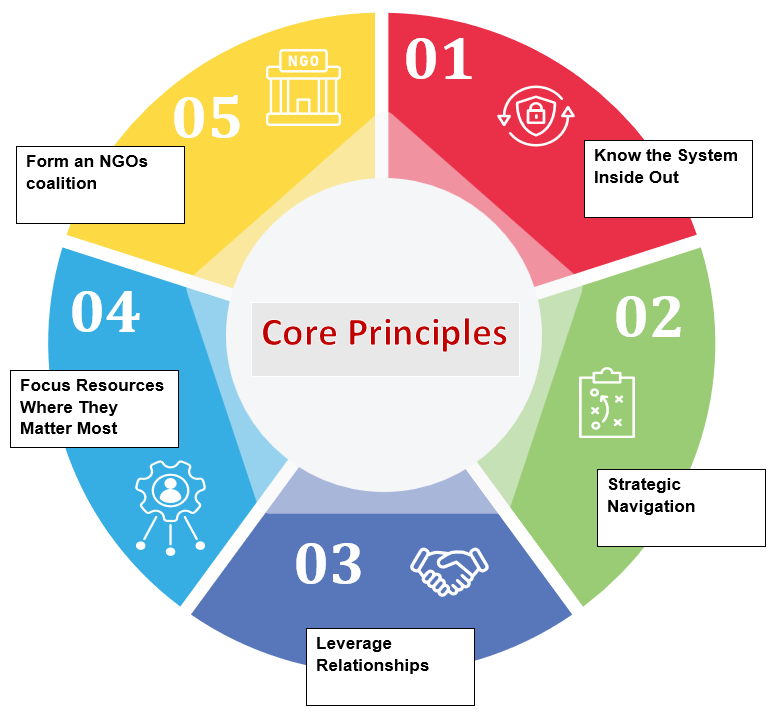
Essential NGO Actions
Essential NGO Actions | ||
|---|---|---|
Area | Low-Resource NGO Strategy | System Knowledge to Use |
 Service Mapping | Maintain an updated list of all relevant government services, contacts, and eligibility rules. | -Know which offices provide housing, legal status, health care, education. – Know opening hours, key staff, and access rules. |
 Government Liaison | Nominate 1 staff/volunteer as Government Contact Lead to handle all service coordination. | – Understand legal entitlements (UNCRC, national child protection laws, asylum laws). |
 Translation Support | Use volunteer interpreters + free interpretation apps; advocate for government-paid interpreters when legally mandated. | – Cite interpretation rights from UNCRC & national laws to push for access. |
 Orientation & Empowerment | Give each URM a basic survival guide in their language. | – Include how to register for services, emergency numbers, public transport basics. |
 Advocacy | Document every service gap and escalate patterns to municipal & national child protection authorities. | – Reference specific laws & directives when making demands. |
 Peer & Community Support | Pair URMs with peer mentors or community volunteers to reduce isolation. | – Encourage knowledge sharing between URMs who have navigated the system successfully. |
Coordination & Coalition
Here a table Coordination and NGO Coalition for Provision of Services concepts, highlighting their purposes, focuses, examples, and key differences:
Coordination & Coalition | ||
|---|---|---|
 Aspect |  Coordination |  NGO Coalition for Provision of Services |
Purpose | Ensure smoother interaction and information flow between NGOs, government agencies, and stakeholders. | Create a structured partnership between NGOs to pool resources and fill gaps in service provision. |
Focus | Communication, alignment, avoiding duplication, and closing service gaps. | Collective service delivery and resource sharing. |
Stakeholders Involved | NGOs, government agencies, other service providers. | Primarily NGOs. |
Examples | – Quarterly joint meetings with government agencies- Shared WhatsApp groups/Google Sheets- Agreed referral procedures | – Shared interpreter pool- Coordinated emergency housing- Joint URM orientation/language sessions- Common service & rights guide |
Key Difference | Information-sharing and strategic alignment across all actors including government. | Active collaboration and resource pooling within the NGO sector to provide or enhance services. |
Outcome:
Even when NGOs are underfunded and overstretched, deep system knowledge, strategic navigation, and targeted advocacy can unlock existing government services, strengthen URM rights, and prevent young people from falling through the cracks.
CASE EXERCISE 1
Mapping the Governance of Immigration and Integration
- Objective
The aim of this exercise is to help participants develop a clear, structured overview of how immigration and integration responsibilities are divided across levels of government and public and non-public sectors in their country. You will be mapping, analyzing, and reflecting on your own country’s system.
Participants will:
- Identify key institutions, stakeholders, and actors.
- Understand how responsibilities are distributed (who does what and at what level).
- Examine how different actors interact—formally or informally.
- Visualize this information through diagrams or roadmaps.
- Reflect on strengths, weaknesses, and coordination challenges.
Please use the provided template to complete the exercise:
Integration into Legal, Tax, Social Security, and Health Systems
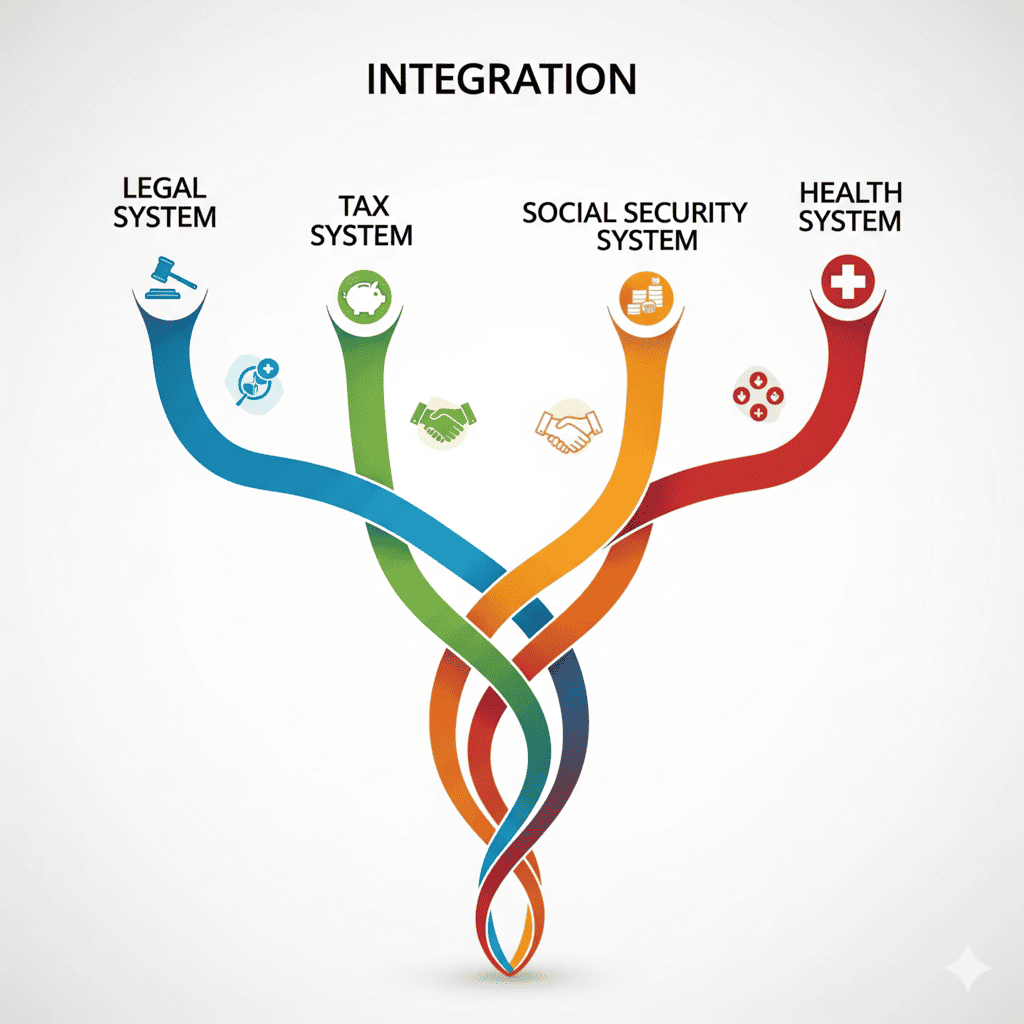
- Legal Integration
Legal integration refers to the process by which individuals obtain a recognized legal status that allows them to live, work, and participate fully in society. For migrants and unaccompanied minors, this includes:
- Asylum or residence permits (temporary or permanent)
- Legal guardianship arrangements (for minors)
- Pathways to citizenship (where applicable)
- Access to legal identity documents (e.g., national ID, residence card)
Legal integration is foundational. Without legal status, individuals are effectively excluded from most public systems, employment, and protections. A lack of clarity or delays in legal processes can leave migrants in limbo, increasing vulnerability and hindering integration in all other areas.
- Tax System Integration
Integration into the tax system involves migrants becoming registered taxpayers, which is often tied to their employment or business activity. Key components include:
- Obtaining a tax identification number
- Understanding rights and responsibilities as taxpayers
- Being included in national or local tax databases
- Access to tax deductions or benefits (e.g., child allowance)
Being part of the tax system is not only a legal obligation but also a sign of economic and civic participation. However, barriers such as informal employment, lack of documentation, or low financial literacy can delay or prevent proper tax system integration.
- Social Security Integration
Social security integration means that migrants and refugees are included in the social safety nets that protect against poverty, unemployment, illness, and old age. This typically includes:
- Registration with the national social insurance system
- Access to benefits such as child support, unemployment insurance, disability payments, and pensions
- Recognition of prior contributions (if applicable)
- Portability of entitlements (e.g., in EU or bilateral contexts)
Unaccompanied minors often rely on state care or guardianship systems until they reach adulthood, at which point they must transition into adult social systems—a process that can be abrupt and complex.
Challenges may include bureaucratic fragmentation, digital access barriers, or unclear eligibility for those with temporary or changing legal status.
- Health System Integration
Access to health care is both a basic human right and a cornerstone of successful integration. Health system integration involves:
- Eligibility for public healthcare services (primary care, mental health, emergency services)
- Assignment to a general practitioner or family doctor
- Access to preventive care, vaccinations, and reproductive health
- Culturally sensitive and trauma-informed care for vulnerable populations
- Health coverage for mental health and psychosocial support, especially relevant for refugee minors
Integration into the health system is often uneven. Migrants may face language barriers, administrative challenges, stigma, or lack of information. Mental health services, in particular, are underutilized despite high levels of need among those with traumatic migration experiences.
- Interconnectedness of Systems
These four systems—legal, tax, social security, and health—are deeply interconnected. Integration into one often depends on access to another:
- Without legal status, migrants may not register for work or healthcare.
- Without formal employment, they may not enter the tax or social security systems.
- Without social security, they may be excluded from certain healthcare or housing benefits.
Gaps in one system can quickly multiply, increasing vulnerability and delaying meaningful integration. Ensuring coordination across agencies, simplifying registration procedures, and providing navigators or integration caseworkers are some ways to improve these transitions.
Real-life examples: Access to Public Services
Access to Public Services
Watch the video interview showcasing the access experience to the governmental services of the unaccompanied refugee minors:
Analysis
Quote: “All YP agreed that accessing health and other public services has been a significant challenge for them. It often requires extensive research, and even then, obtaining the correct information can be difficult. Without proper guidance, navigating these systems becomes overwhelming. One YP noted that they need to stay connected with others to successfully access the services they need, emphasizing the importance of community support in this process.
This quote highlights a critical reality: access to services is not just a matter of availability—it’s also about navigability and support. For young people, especially those with refugee or migrant backgrounds, systems like healthcare, education, social welfare, and legal support can be complex, bureaucratic, and intimidating.
- Structural Barriers: Complexity and Information Gaps
Challenges | Impact |
|---|---|
No clear, accessible information in multiple languages | Makes services hard to understand and navigate |
Lack of knowledge on rights and entitlements | Prevents young people from claiming services they’re eligible for |
Absence of service guidance or navigation | Increases stress, confusion, and withdrawal from systems |
Internet doesn’t always help | Research |
- Community as a Bridge to Access
The comment that “they need to stay connected with others” speaks to the vital role of social networks in navigating public systems. Friends, mentors, peer groups, and community members often act as informal guides, translators, and sources of lived experience. Without this support, isolation and exclusion become real threats.
- Community Networks Offer:
- Informal guidance and interpretation
- Lived experience sharing
- Emotional support and trust-building
- Community as a Bridge to Access
- Isolation
- Service exclusion
- Emotional distress
Solution Area | Examples |
|---|---|
Peer Support | Peer-to-peer programs, youth-led networks |
Navigation Help | Community workers, “navigators”, mentors |
Mentorship Models | Linking youth with trusted adults or trained guides |
- Belonging Is Foundational
“Belonging is a fundamental need for everyone… Absence of such connections can lead to exclusion… Participation in social and cultural arenas helps immigrants experience belonging and develop language skills.”
Belonging is not just emotional—it’s social, developmental, and practical. For young migrants and URMs, especially, feeling part of something—whether a school, a sports club, or a local community center—is foundational for:
- Language acquisition
- Social learning and confidence-building
- Mental health and emotional well-being
- Willingness to engage with public institutions
When these connections are absent, young people may become passive, isolated, or distrustful of the host society. This has real implications: it can delay integration, discourage participation, and in worst cases, contribute to withdrawal, mental health crises, or involvement in risky behaviors.
System-level adaptations and relational strategies
To bridge the gap between services and young people, and to support their sense of belonging, we need both system-level adaptations and relational strategies:
- Service Design Must Be Youth-Centric
Strategy | Action |
|---|---|
Youth Ambassadors / Experts by Experience | Use youth with lived experience to guide peers in navigating services. |
Multilingual Welcome Guides | Provide orientation materials in multiple languages. |
Cross-Sector Caseworkers | Offer support persons who connect services across health, legal, education. |
- Belonging Through Participation
Strategy | Action |
|---|---|
Engagement Programs | Invest in volunteering, arts, sports, and cultural activities. |
Inclusive Institutions | Equip schools, clubs, and youth spaces to support diverse backgrounds. |
- Trust-Building Through Relationships
Strategy | Action |
|---|---|
Safe Social Spaces | Create regular, welcoming environments for peer and adult interaction. |
Early Integration | Make school and youth program participation a right, not a reward. |
Intercultural Dialogue | Support anti-discrimination training and cultural exchange initiatives. |
This quote reveals a deeper truth: access, belonging, and trust are interconnected. Navigating public systems is not just about policies—it’s about people. When young migrants feel seen, supported, and included, they are more likely to access the services they need, trust the institutions around them, and take part in the life of the community.
A system that fails to foster these relationships risks producing silent exclusions—where rights exist on paper, but not in lived experience.
Framework Supporting Translation Services
Legal Framework Supporting Translation Services for Unaccompanied Refugee Minors
- Lack of Interpretation = Barrier to Services
Quote from the video: “Difficulty in communication affects access to health, education, social welfare and legal support services. It can create misunderstandings and hinder a proper understanding of a person’s rights and obligations. Characteristically, one participant reported that “I was 5 months locked up in the container in the Malakasa camp. I did not feel like going outside the room. Then I got sick and no one came to see if I was dead or alive.” On the other hand, when services are not available in multiple languages or when workers are not properly trained to communicate with people who do not speak their language, this can limit access to services.”
- What the Quote Reveals
Issue | Impact |
|---|---|
Lack of language access | Creates misunderstandings; hinders comprehension of rights and duties |
No multilingual support | Prevents access to essential services (health, education, welfare, legal) |
Untrained staff | Inability to communicate with non-native speakers |
Emotional & physical isolation | As seen in the quote: withdrawal, illness, and being overlooked |
The provision of translation and interpretation services is often grounded in international, regional, and national laws that prioritize the rights and welfare of refugees, particularly minors. Legal frameworks underscore that all individuals, regardless of their linguistic background, should have equitable access to essential services. These laws make it clear that providing translation is not merely a good practice but a legal responsibility, especially for vulnerable groups like unaccompanied refugee minors (URMs).
Here are some key legal frameworks that support the obligation to provide translation and interpretation services for URMs:
- 1. Key Legal Frameworks Supporting Translation Services
- United Nations Convention on the Rights of the Child (UNCRC)
Article | Provision |
|---|---|
Article 22 | Children seeking refugee status are entitled to “appropriate protection and humanitarian assistance”, including language-accessible services. |
Article 12 | Children have the right to express views freely — this requires effective communication and translation support. |
- European Union Law: Reception Conditions Directive (2013/33/EU)
Article | Provision |
|---|---|
Article 5 | Asylum seekers must be informed in a language they understand about their rights, obligations, and available services. |
Article 25 | Mandates special care and language support for unaccompanied minors. |
- UNHCR Guidelines on International Protection No. 8
States are obligated to ensure communication between URMs and their legal representatives, guardians, and caregivers.
✅ Interpretation and translation are explicitly recommended to ensure protection and participation.
- 2. National Legislation Examples
- Norway – Tolkeloven (Law on Public Authorities’ Responsibility to Use Interpreters)
Provision | Detail |
|---|---|
Qualified Interpreters | Mandatory in public services (health, education, legal, social). |
Priority for Vulnerable Groups | URMs and children are prioritized |
Professional Standards | Interpreters must follow codes of confidentiality, impartiality, and accuracy. |
Enforced by | Norwegian Directorate of Integration and Diversity (IMDi). |
- Germany – Asylum Seekers’ Benefits Act
Requires language support in healthcare and social services for asylum seekers, including minors.
- Canada – Immigration and Refugee Protection Act (IRPA)
Provides interpreters for refugee claimants (including minors) during legal and administrative proceedings.
- European Charter for Regional or Minority Languages
While focused on minorities, this charter supports providing public services in understood languages, reinforcing the need for interpretation in URM contexts.
- 3. Translation in Practice: Social Worker’s Role
- Why Translation is Essential
Function | Explanation |
|---|---|
Ensures Access | Helps URMs access health, education, legal aid, and welfare. |
Safeguards Rights | Ensures understanding of legal and social responsibilities. |
Promotes Well-being | Reduces isolation, improves mental health, fosters belonging |
Implementing Legal Protections in Practice
Given these legal frameworks, social workers can take specific steps to secure translation services and advocate for the rights of URMs:
- Reference Specific Laws When Advocating for Services: Social workers can cite the UNCRC, EU Directives, or relevant national laws when requesting translation support from service providers. By framing these requests in terms of legal obligations, social workers strengthen the case for immediate and sustained language support.
- Involve Child Welfare and Refugee Advocacy Organizations: Collaborating with organizations that specialize in child protection or refugee rights can also help ensure compliance. These organizations often provide training and resources to service providers on legal obligations related to translation.
- Documentation and Follow-Up: Ensure that any communication regarding rights, healthcare, education, or legal proceedings provided to URMs is documented in a language they understand. Where possible, social workers should document the use of interpreters or translation tools to demonstrate compliance with these legal standards and to monitor understanding.
For unaccompanied refugee minors (URMs), the lack of translation services in the host country can create severe barriers to essential services and a sense of isolation. Without adequate interpretation, communication gaps can lead to missed opportunities for support and severe misunderstandings, especially regarding health, legal rights, and education. Ensuring that URMs can communicate effectively and understand their rights and responsibilities is fundamental for their well-being and integration.
The quote above illustrates the severe consequences of inadequate translation services, where one minor, unable to communicate or seek assistance, felt trapped and neglected within a refugee camp. Situations like these underscore the importance of translation to ensure that URMs can access crucial services and support networks.
Strategy: Securing Translation for URMs
- Develop a Translation & Interpretation Support Plan
- A. Establish a List of Available Translation Resources
Action | Details |
|---|---|
Compile a Local Resource List | Include NGOs, government services, and online platforms offering interpretation. |
Partner with Language Organizations | Secure rapid access to interpreters fluent in URM languages for urgent needs (e.g. medical, legal) |
- Advocate for On-Site or On-Call Translators
Action | Details |
|---|---|
Engage Key Institutions | Collaborate with schools, hospitals, and legal aid providers. |
Use Legal Arguments | Reference national/international child protection laws and refugee directives to request services. |
- Use Technology as a Supplementary Tool
Action | Details |
|---|---|
Train Staff on Apps | Equip staff to use translation apps when no interpreter is available (for basic communication only). |
Teach URMs to Use Apps | Help youth gain independence through reliable two-way translation tools. |
Caution | Do not use apps for legal or medical interpretation. |
- Monitor and Address Miscommunication
Action | Details |
|---|---|
Follow-Up Procedures | Confirm that URMs understood key information during appointments. |
Review Translations | Go over documents and explanations to clear confusion. |
Train Staff in Cultural Sensitivity | Help reduce miscommunication and build trust |
- Develop a Translation & Interpretation Support Plan
By following these steps, social workers can:
✅ Secure legally compliant language support
✅ Safeguard URMs’ access to vital services
✅ Promote well-being, autonomy, and integration
📌 Translation is protection. It’s a practical tool—and a human right.
HEALTH SYSTEM
The Health, Housing and Education systems are foundational to every other aspect of life for URMs. Without access to safe shelter and responsive healthcare, minors cannot:
- Focus on school or learning the local language.
- Build healthy relationships or feel secure in their community.
- Begin healing from trauma or plan for the future.
As noted in the module:
“YP agreed that accessing health and other public services has been a significant challenge… Without proper guidance, navigating these systems becomes overwhelming.”
🩺 HEALTH SYSTEM
Unaccompanied refugee minors (URMs) often struggle to understand and access health services in a new country. Fear, language barriers, and unfamiliar systems can delay care, exacerbate illness, and contribute to a sense of isolation. Establishing a well-structured, youth-friendly, and linguistically accessible health support system is essential to meet their needs and uphold their rights.
To improve outcomes, key actions include:

Creating a multilingual, illustrated Health Welcome Pack explaining how to register with doctors, access emergency and mental health services, and request interpretation.

Providing early health orientation sessions with interpreters to explain healthcare rights, appointment booking, and available services.

Implementing trauma-informed care by training staff, conducting psychological screenings, and partnering with culturally competent mental health providers.

Assigning health navigators to support minors through appointments, follow-ups, and understanding diagnoses.

Deploying mobile health clinics to reach youth in remote or underserved locations, ensuring equitable access to basic healthcare.
Here’s an Action Table the key recommendations from the health system text for Unaccompanied Refugee Minors (URMs):
- Health System Action Table for URMs
Action Item | Description | Target Audience | Timeframe | Responsible Stakeholders |
|---|---|---|---|---|
1. Develop “Health Welcome Pack” | Multilingual, illustrated guide explaining how to access healthcare services (e.g., GP registration, emergency care, mental health access, interpreters). | Newly arrived URMs | Upon arrival | Health authorities, NGOs, Translators, Graphic designers |
2. Conduct Health Orientation Sessions | Early sessions explaining healthcare structure, rights to free care, appointment systems, and where to seek help; includes interpreters and cultural sensitivity. | URMs in first weeks after arrival | Within first 2 weeks | Healthcare providers, Interpreters, Community outreach teams |
3. Train Frontline Staff in Trauma-Informed Care | Equip staff to identify and respond to trauma-related needs; includes psychological screenings and culturally competent referrals. | Medical and support staff | Ongoing | Hospitals, Mental health organizations, Training institutes |
 4. Provide Regular Psychological Screenings | Screenings to identify trauma and mental health issues early, with culturally appropriate care pathways. | All URMs | Within first month and periodically | Mental health professionals, School counselors |
5. Assign Dedicated Health Navigators | Professionals who accompany URMs to appointments, explain health info in simple terms, and coordinate follow-up care. | URMs needing assistance | Continuous | Social workers, Health coordinators, Child welfare agencies |
6. Deploy Mobile Health Clinics | Clinics providing check-ups, vaccinations, and referrals in underserved areas (e.g., camps, rural housing). | URMs in remote/underserved areas | Regular intervals | Health departments, Mobile care teams, NGOs |
- Housing System Support for Unaccompanied Refugee Minors (URMs)
Safe and stable housing is vital for the integration of unaccompanied refugee minors, who often face challenges managing new living environments. Key actions to support them include:

Providing a comprehensive housing orientation toolkit with translated, illustrated materials on fire safety, appliance use, tenant rights, repairs, and emergency contacts.

Implementing supported transition housing through phased moves from supervised group accommodations to semi-independent and fully independent living, with mentoring.

Training landlords and housing staff in cultural sensitivity and trauma-informed care to foster trust and reduce conflicts.

Establishing a housing navigation service where caseworkers assist minors in finding housing, understanding leases, resolving disputes, and planning long-term stability.

Enforcing housing quality standards with regular inspections and anonymous reporting to ensure safe, hygienic accommodations.

Offering homeownership education for older minors, covering mortgages, renting vs. owning, credit, and legal protections, supported by financial mentors.
These measures promote secure, supportive housing environments that empower URMs and facilitate their successful integration.
- Action Point Table: Housing System Support for Unaccompanied Refugee Minors
Action Point | Description | Responsible Entities |
|---|---|---|
 1. Develop Housing Orientation Toolkit | Provide translated and illustrated materials covering fire safety, appliances, repairs, tenant rights, and emergency contacts. | NGOs, Housing Providers, Local Authorities |
 2. Implement Phased Transition Housing | Introduce a step-by-step housing path: supervised group housing → semi-independent units → independent flats. | Social Services, Refugee Agencies |
 3. Train Housing Staff in Cultural Sensitivity | Offer training on trauma-informed care, cultural norms, anti-discrimination, and communication strategies. | Housing Agencies, Landlords’ Associations |
 4. Establish Housing Navigation Services | Assign caseworkers to help minors with housing search, lease education, dispute resolution, and long-term planning | Refugee Support Organizations, Social Workers |
 5. Enforce Housing Quality Standards | Conduct regular inspections and provide anonymous reporting channels to ensure safety and dignity in housing. | National & Local Housing Authorities |
 6. Provide Homeownership Education | Create a “Buying a Home 101” module with financial literacy content, translated resources, and mentor support. | Financial Institutions, Educators, NGOs |
 7. Ensure Monitoring and Feedback Mechanisms | Create systems for feedback from URMs on housing conditions and support effectiveness. | Refugee Councils, Oversight Committees |
- Education System
Education is one of the most powerful tools for the integration and empowerment of unaccompanied refugee minors (URMs). It provides not only academic skills but also a pathway to social inclusion, language acquisition, and emotional stability. Yet, many URMs face barriers such as interrupted schooling, language gaps, unfamiliar curricula, and limited understanding of their rights to education. Establishing a clear, accessible, and supportive education pathway is essential for their successful integration.
- Action Point Table: Education System Support for Unaccompanied Refugee Minors
Action Area | Action Point | Description | Responsible Entities |
|---|---|---|---|
 School Orientation & Enrollment | Develop a School Welcome Pack | Multilingual, illustrated guide explaining enrollment steps, required documents, school structure, and key roles. | Schools, Education Ministries, NGOs |
Ensure early school enrollmentg | Immediate placement into appropriate schools to foster structure and community engagement. | School Boards, Local Authorities
| |
 Language Support | Provide intensive language classes | Specialized “welcome classes” to accelerate language acquisition | Schools, Education Departments |
Implement peer-assisted learning | Pair URMs with local students to boost language and social integration. | Schools, Youth Programs | |
Distribute multilingual resources | Access to bilingual dictionaries, translated materials, and learning apps. | Schools, Libraries, NGOs | |
Offer community-based language clubs | NGOs and volunteers provide after-school support in informal settings | NGOs, Community Centers | |
 Academic & Career Guidance | Conduct academic assessments | Evaluate learning level based on skills, not just age, to place students appropriately. | Schools, Education Psychologists |
Offer bridging programs | Help students catch up in subjects where learning was interrupted. | Schools, NGOs | |
Provide career and education counseling | Guide youth on vocational training, apprenticeships, higher education, and funding options. | Schools, Career Services, NGOs | |
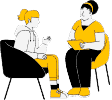 Psychosocial Support | Train staff in trauma-informed education | Teachers receive training on how trauma affects learning and behavior. | Education Departments, Mental Health Experts |
Ensure access to counselors | Regular sessions with psychosocial professionals to support emotional well-being. | Schools, Health Services | |
Create safe spaces in schools | Confidential, supportive environments where students can talk and feel secure. | Schools | |
 Guardian Engagement | Include guardians/mentors in school life | Regular updates, parent-teacher meetings with interpreters, and workshops on educational support. | Schools, Foster Agencies, NGOs |
 NGO & Community Partnerships | Provide tutoring and homework help | NGOs fill gaps in formal support with extra academic assistance. | NGOs, Volunteer Networks |
Organize study groups and digital learning access | Enable access to online platforms and facilitate group learning. | NGOs, Libraries | |
 Pathways to Further Education & Employment | Offer vocational training and apprenticeships | Provide practical training for older URMs nearing adulthood. | Vocational Schools, Employment Agencies |
Run job readiness workshops | Focus on soft skills, CV building, and interview prep. | NGOs, Youth Employment Services | |
Share legal info on work/study pathways | Educate about work permits, student visas, and transition planning. | Immigration Services, Legal Aid, NGOs |
- Facilitating the access to public transport
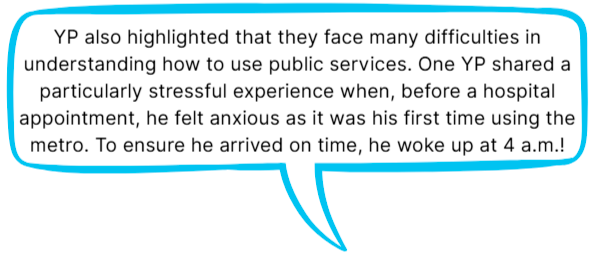
Importance of Introducing the Transport System in the Host Country
For unaccompanied refugee minors, navigating public transport systems can be overwhelming, particularly in their early experiences in a new country. Introducing the transport system—especially complex networks like metro systems—is essential for several reasons:
- Reducing Anxiety and Building Confidence: Public transport, especially metro systems, is often intricate and fast-paced. URMs who are unfamiliar with the system may feel intimidated by its complexity, leading to heightened anxiety and potentially discouraging them from using public transport independently. An introduction to the metro system helps to build their confidence, ensuring they feel safe and capable in moving around the city.
- Promoting Punctuality and Independence: As highlighted in the quote, URMs may go to extraordinary lengths—such as waking up at 4 a.m.—to ensure they arrive on time to appointments because of uncertainty and lack of familiarity with the transport system. Proper guidance on metro use can empower URMs to travel independently and reliably, making sure they meet commitments like medical appointments, educational classes, and other important engagements without unnecessary stress.
- Fostering Social Integration and Resource Access: Mastery of the public transport system allows URMs to access educational, social, and recreational resources, which are crucial for their well-being and integration. This independence contributes to a sense of belonging, enabling them to explore the host city, make connections, and engage with community activities.
- Case Exercise
Guided Metro Exploration Session:
One practical way to introduce the metro system to URMs is through a Guided Metro Exploration Session:
- Start with an Orientation Workshop:
- Begin with a brief, visual presentation on the basics of the metro system, such as reading maps, identifying lines, understanding color codes, and recognizing symbols (like exit signs and emergency contacts).
- Use an example journey to illustrate how they would plan a route, where to switch lines, and what common signage means.
- Practice Journey with a Social Worker:
- Organize a field trip to a nearby metro station and guide them through buying a ticket or using a pass, passing through turnstiles, and reading live information screens.
- Practice a short journey together, ideally to a common destination like a local community center or library. Explain any specific cultural etiquette, such as queuing, giving up seats for elderly passengers, and handling crowded spaces.
- Debrief and Reflect:
- After the journey, debrief with the minors by encouraging them to share their feelings and observations. Address any concerns they might have and discuss additional questions.
- Provide a small printed or digital guide with reminders on common metro practices and helpline numbers. Encourage them to try traveling with a peer or on a similar route to build confidence.
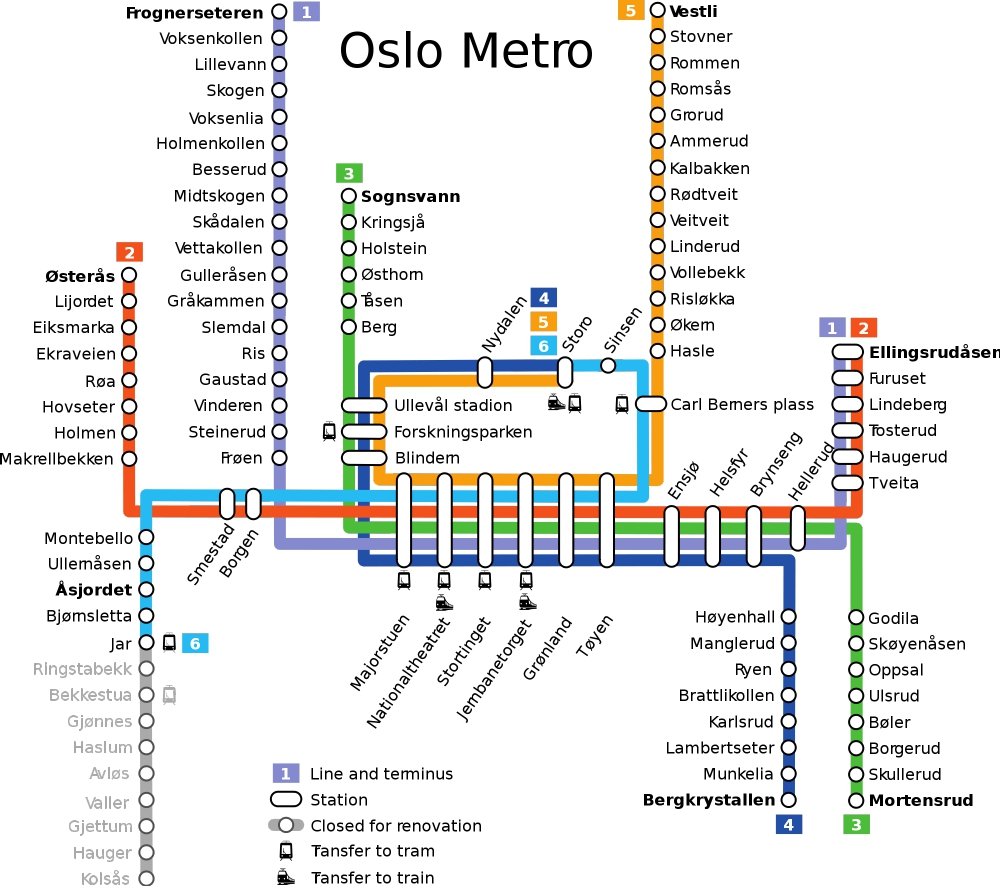
- Tax System
Introducing the Tax System to Unaccompanied Refugee Minors
Unaccompanied refugee minors (URMs) often come from societies where government systems—especially taxation—are limited, inconsistent, or mistrusted. For those who are transitioning into adulthood and beginning to work in a host country, understanding how the tax system works is essential. It helps ensure legal and financial stability, and builds trust in the systems that support their well-being. Learning about taxes also helps them understand their rights and responsibilities, and how their contributions support the community.
Key Concept | Explanation | Practical Takeaways for URMs |
|---|---|---|
 1. Purpose and Benefits of Taxes | Taxes fund public services (healthcare, education, transport, safety, social support). Paying taxes helps build a fair society. | Understand that taxes are contributions, not just obligations. Everyone—including URMs—benefits from public services. |
 2. Legal Obligations and Rights | Taxes must be paid if income is above a certain threshold. Paying taxes also grants access to benefits and protections. | Gain access to health, unemployment benefits, pensions, legal protections, and stronger residency/citizenship claims. |
 3. Understanding Tax Returns and Filing | Tax returns are reports of income and taxes paid. Overpayments can lead to refunds. Many systems are digital and offer free help. | Learn how to file returns, check eligibility for refunds, and use free or low-cost filing assistance. |
 4. Union Membership and Workers’ Rights | Labor unions protect workers, ensure fair treatment, and offer tax/legal advice. | Join a union for support on wages, contracts, workplace rights, and legal/tax help. |
 5. Risks of “Working Black” (Off the Books) | Informal work avoids taxes but carries risks: no benefits, no job protection, no legal proof of employment, possible fines or legal issues. | Choose official employment for safety, rights, and future opportunities (residency, benefits). Avoid off-the-books jobs. |
 6. Budgeting and Managing Debt | Budgeting = planning income vs. expenses; Debt = borrowing money that must be repaid, often with interest. | Track income/expenses, separate needs vs. wants, save if possible. Avoid high-interest debt. Seek help if struggling with debt. |
 7. Importance of Banks | Banks provide safe money storage, wage deposits, income records, bill payments, and credit building. | Open a bank account early, keep records, use banks for official income. Never share PINs. Use bank statements for taxes/benefits. |
Understanding the tax system, budgeting, and debt management helps unaccompanied refugee minors gain financial independence and long-term stability. By learning how to navigate these systems, they are better prepared to build a secure life in their host country—and become informed, empowered members of their new community.
- Case Exercise #1
Explaining the Tax System to URMs
- Introduce a Visual “Tax Flow” Diagram:
- Create a simple flowchart that visually shows how tax contributions are collected and allocated to services like healthcare, education, and social services.
- Use real-life examples that they may have encountered, such as visiting a free clinic, attending public school, or using public transportation, to illustrate how taxes directly support these resources.
- Explain how their future participation in the workforce contributes to the upkeep of these services and benefits everyone, including them.
- Discuss Taxation Scenarios with Examples:
- Offer a relatable scenario, like getting a part-time job. Describe how taxes are deducted from their income and outline the breakdown of a typical paycheck. Show the difference between gross (before tax) and net (after tax) income.
- Discuss what happens if they work “black” by using another example: without legal pay, they have no job protection, no formal wage standards, and no proof of income, which can limit their ability to rent housing or access other support. Additionally, working outside the system can lead to complications with residency requirements and future citizenship applications.
- Introduce the Concept of Union Membership:
- Explain that unions are organizations that advocate for workers’ rights, including fair wages, safe working conditions, and secure benefits. Highlight how unions can support them in understanding their workplace rights, and that unions are often funded through small dues paid by members.
- Illustrate how unions can provide resources on topics like taxes and work benefits, and how they represent employees in conflicts, helping them navigate both their tax responsibilities and employment protections.
- Provide an Interactive Q&A Session:
- Create a safe space where URMs can ask questions openly about the tax system, working legally, and their rights as employees.
- Address any fears about government corruption by explaining checks and balances in the host country’s government and how taxpayer funds are monitored to prevent misuse.
- Develop a Resource Handout:
- Give a simple handout explaining key tax terms, such as “gross income,” “net income,” “tax deductions,” and “tax return,” as well as the role of unions.
- Include a list of resources and contacts for local unions, legal aid, and tax assistance programs where they can seek help with tax questions or issues.
By using these methods, social workers can help URMs understand the tax system and see it as a structured, fair process designed to support society. This will empower them to work legally, access public services, and understand their rights and obligations as contributing members of the host community.
- Case Exercise #2
Providing a Welcome package check- list!
Steps:
- Legal Status and Documentation: Ensure the child’s legal status is documented and they are registered with the relevant authorities. Facilitate access to asylum processes or other legal protections.
- Safe Accommodation: Provide immediate placement in a safe, child-friendly environment, such as a foster family, group home, or specialized shelter for unaccompanied minors. Ensure the setting is equipped to meet their specific needs.
- Health and Mental Health Services: Arrange for immediate medical and psychological evaluations. Provide ongoing access to healthcare, including trauma-informed mental health services.
- Guardian Assignment: Appoint a legal guardian or advocate who will act in the best interests of the child, ensuring they have someone responsible for their care and legal representation.
- Education and Skill Development
- Access to Education: Ensure immediate and continued access to education. This includes formal schooling as well as non-formal education that might address gaps due to interrupted education.
- Language Learning: Provide language courses to help minors integrate into their new environment and participate fully in society.
- Legal and Advocacy Support
- Legal Aid Services: Provide access to legal aid to help navigate the asylum process, understand their rights, and ensure protection under international law.
- Human Rights Education: Educate minors on their rights and how to access available services and protection mechanisms.
- Monitoring and Evaluation
- Regular Monitoring: Continuously monitor the well-being of the minors, assessing their physical, emotional, and social health. Adjust care plans as needed.
- Feedback Mechanisms: Establish channels for minors to provide feedback on the services they receive, ensuring their voices are heard in their own care.
- Collaboration and Coordination
- Multidisciplinary Teams: Establish multidisciplinary teams that include social workers, legal professionals, healthcare providers, and educators to create holistic care plans.
- Partnerships with NGOs and International Organizations: Collaborate with Government/NGOs, UN agencies, and other stakeholders to ensure comprehensive care, leveraging resources and expertise.
- Cross-Sector Coordination: Work with government agencies, law enforcement, and educational institutions to provide a seamless support system for minors.
Please, make a list of the governmental social services with short description, telephone and address in your country that is relevant for newcomers. You can do it in different formats:
Reception Guide for Refugees | |
|---|---|
Format | Leaflet or PDF |
Content | – Welcome message – Essential information on refugee rights, required documents, and administrative procedures – List of essential services (health, education, administration) including addresses, opening hours, and access instructions – Important contacts: emergency numbers, local NGOs, IPSSs, and cultural mediators – Local map showing key service locations |
Languages | Commonly spoken refugee languages in your country |
Information Posters and Banners | |
|---|---|
Format | Printed or Digital |
Content | – Location of support services – Key messages (e.g. “You’re not alone, you can find support here.”) – Contact information including emergency numbers and support centres – Visual summary of refugee rights |
Display Locations | Reception centres, hospitals, schools, and other high-traffic public spaces |
Information Videos | |
|---|---|
Format | Short videos (2–3 minutes) |
Content | – Welcome video introducing the host country and its culture – Tutorials on registering for health services, accessing education, and administrative procedures – Testimonial stories from refugees sharing successful integration experiences |
Languages | Narrated or subtitled in relevant languages |
Distribution | Digital platforms, social media, reception centres |
- Further reading and References
- Rittel, H. W. J., & Webber, M. M. (1973).
Dilemmas in a General Theory of Planning.
Policy Sciences, 4(2), 155–169.
— Introduces the concept of “wicked problems,” foundational to understanding the complexity of migration and integration issues. - Scholten, P., & Penninx, R. (2016).
The Multilevel Governance of Migration and Integration.
In Garcés-Mascareñas, B., & Penninx, R. (Eds.), Integration Processes and Policies in Europe (pp. 91–108). Springer.
— Discusses how responsibilities are distributed across governance levels and the implications for migrant integration. - United Nations High Commissioner for Refugees (UNHCR).
UNHCR Guidelines on International Protection No. 8: Child Asylum Claims under Articles 1(A)2 and 1(F) of the 1951 Convention.
— Details legal standards for the protection of refugee children, including unaccompanied minors. - Save the Children (2020).
Unaccompanied and Separated Children: A Field Guide for Frontline Staff.
— A practical guide for those working directly with URMs, focusing on care, protection, and psychosocial needs. Field Handbook on Unaccompanied and Separated Children – Save the Children’s Resource Centre - Bozorgmehr, K., & Razum, O. (2015).
Effect of Restrictive Policies on the Health of Asylum Seekers and Refugees.
The European Journal of Public Health, 25(6), 910–912.
— Explores how policy structures influence health access and outcomes for refugee populations. - International Organization for Migration (IOM) (2023).
Navigating Integration: Toolkit for Local Authorities.
— Offers tools and case examples to improve integration strategies at the local level, with insights relevant to youth-focused work.
- Nilsen, A. (2022).
Building Trust Through Trauma-Informed Approaches in Services for Refugee Youth.
Nordic Social Work Research.
— Explores trauma-informed practices that enhance engagement and long-term support. - Guidance on Reception Conditions for Unaccompanied Children | European Union Agency for Asylum
Legal and Policy References
- United Nations Convention on the Rights of the Child (UNCRC)
Convention on the Rights of the Child | OHCHR
— Key articles: 12, 22 - Reception Conditions Directive (2013/33/EU)
Directive – 2013/33 – EN – Reception Conditions Directive – EUR-Lex — Ensures minimum standards for the reception of asylum seekers in EU Member States, with specific provisions for unaccompanied minors. - UNHCR (2017).
The Best Interests of the Child: A Guide for Determining and Applying the Best Interests of the Child.
UNHCR Guidelines on Determining the Best Interests of the Child | UNHCR - Norwegian Interpretation Act (Tolkeloven)
Lov om offentlige organers ansvar for bruk av tolk mv. (tolkeloven) – Lovdata
Immigration and Refugee Protection Act — Establishes legal requirements for interpretation in public services.
- Asylbewerberleistungsgesetz (Germany)
— The Asylum Seekers’ Benefits Act provides social and medical support, including interpretation, for asylum seekers.
Asylum-Seekers’ Benefits Act (Leistungen nach Asylbewerberleistungsgesetz, AsylbLG) – Sozialplattform - Immigration and Refugee Protection Act (Canada)
Immigration and Refugee Protection Act — Establishes legal requirements for interpretation in public services.
— Outlines refugee rights, including access to interpretation during legal proceedings. - Arbeid med enslige mindreårige asylsøkere og flyktninger | IMDi
